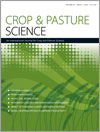Climate change is predicted to decrease crop yields in semi-arid and subtropical regions of the world and this could negatively affect smallholder farmers in the developing world. Previous analysis has suggested that with low fertiliser input, yields of sorghum increased as temperatures increased. We used the wide range of tropical environments in the small mountainous island country of Timor-Leste to evaluate the impact of global warming on maize (Zea mays) yields with (i) no fertiliser input and (ii) increased nitrogen (N) supply. We calibrated the well-tested APSIM-Maize model for the cultivar of maize grown throughout Timor-Leste. We simulated maize yields at four locations with 8 years of reliable weather records, at present temperatures, 1.5°C and 3.0°C, with 0, 40 and 80 kg/ha of added N, with 1.2, 1.9 and 3.8% soil organic carbon (SOC), and with increased duration of the vegetative phase. With no added N, higher temperatures increased yields at the cooler, higher elevation sites and decreased yields at the warmest site near the coast. With fertiliser application, warming temperatures decreased yields or induced no change in simulated yield at all locations. Simulations with three levels of N supply for the four sites, which differed in temperature, showed a strong temperature × N supply interaction on yield. At maximum growing-season temperatures >31°C, yields decreased with increasing temperature at all levels of fertilisation. At maximum growing-season temperatures of 23−31°C, yields increased with increasing temperature with no added fertiliser, were unchanged with the application of 40 kg N/ha, and decreased with increasing temperatures with application of 80 kg/ha N. The changes in yield with temperature and N supply were associated with N uptake by the maize, which showed the same interaction with maximum temperature and N added. SOC acted as a source of N, so that changes in yield induced by temperature and N were similar whether the N was from an organic or an inorganic source. Increasing the duration of the vegetative phase resulted in lower or no change in yields at all sites. We conclude that global warming will increase the yield for low-input smallholder farmers growing maize at maximum growing-season temperatures <31°C, but that micro-dosing with N will increase yields at all locations with mean maximum temperatures of 20−35°C.
How to translate text using browser tools
29 February 2016
Effect of climate warming on maize production in Timor-Leste: interaction with nitrogen supply
Samuel A. Bacon,
Raimundo Mau,
Florindo M. Neto,
Robert L. Williams,
Neil C. Turner
ACCESS THE FULL ARTICLE

Crop and Pasture Science
Vol. 67 • No. 2
February 2016
Vol. 67 • No. 2
February 2016
crop simulation
nitrogen uptake
phenology




